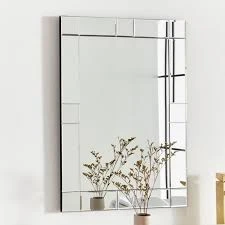Acid etched mirror glass is a marvel of modern interior design, offering a unique blend of aesthetics, functionality, and innovation in home and office settings. Its distinctive characteristics have made it a preferred choice for architects, interior designers, and homeowners seeking to create eye-catching and elegant spaces. This article aims to delve into the depths of acid etched mirror glass, exploring its advantages, practical applications, and what makes it a reliable choice in the world of interior design.

Acid etched mirror glass undergoes a meticulous process where the glass surface is treated with an acid-based solution, etching patterns or designs that diffuse light and add texture. This process gives the glass a frosted appearance that enhances privacy while still allowing ample light to pass through. The subtle yet sophisticated finish of acid etched glass lends itself to numerous applications, both functional and decorative.
One of the key advantages of acid etched mirror glass is its ability to combine beauty with practicality. The textural element not only adds a decorative accent but also helps in reducing glare and concealing smudges, making maintenance comparatively effortless. This makes it an ideal choice for high-traffic areas such as bathroom mirrors, lobby interiors, and office dividers where style cannot be compromised at the expense of practicality.

In a world where personalization is paramount, acid etched mirror glass stands out with its ability to be customized into a variety of patterns and designs. Whether one desires intricate floral motifs or sleek geometric shapes, the customization options make it possible to tailor this glass to match the persona and architectural style of any space. This distinctive flexibility allows it to serve multiple purposes, from being a key design feature in retail spaces to enhancing the ambiance of residential settings.
From a technical standpoint, the durability and safety of acid etched mirror glass further testify to its high-quality nature. The etching process does not compromise the strength of the glass, allowing it to retain its resilience against everyday wear and tear. The application of safety films can enhance this durability, providing reassurance that the glass remains intact even when subjected to high impacts, thus making it a safe choice for environments frequenting children or bustling office spaces.
acid etched mirror glass
Economically, acid etched mirror glass is also a viable investment. Its longevity and ease of maintenance ensure that it remains cost-effective over time, reducing the need for frequent replacements that are typical with lesser quality materials. By investing in acid etched mirror glass, users not only elevate the aesthetic appeal of their surroundings but also foster an environment that is conducive to both comfort and efficiency.
In terms of environmental impact, acid etched mirror glass is often produced using sustainable practices, minimizing waste and energy consumption. This makes it an attractive option for environmentally-conscious consumers, providing a pathway to enhance interior spaces without a significant ecological footprint. Its compatibility with other eco-friendly building materials furthers its appeal for projects aiming for green certification or sustainable building standards.
Finally, the trustworthiness of acid etched mirror glass can be attributed to manufacturers who adhere to stringent quality controls. Reputable brands offer warranties, affirming the longevity and performance of their products. Purchasing from certified suppliers ensures compliance with international safety standards, offering peace of mind to users who prioritize both security and excellence in their design endeavors.
In conclusion, acid etched mirror glass stands as a testament to innovative design and practical functionality. Its combination of aesthetic versatility, durability, and ecological benefits makes it a superior choice for those looking to refine their living or working spaces with a touch of sophistication. As it continues to gain prominence in interior design, its role is set to expand, promising enhanced aesthetics and utility for future architectural endeavors.



